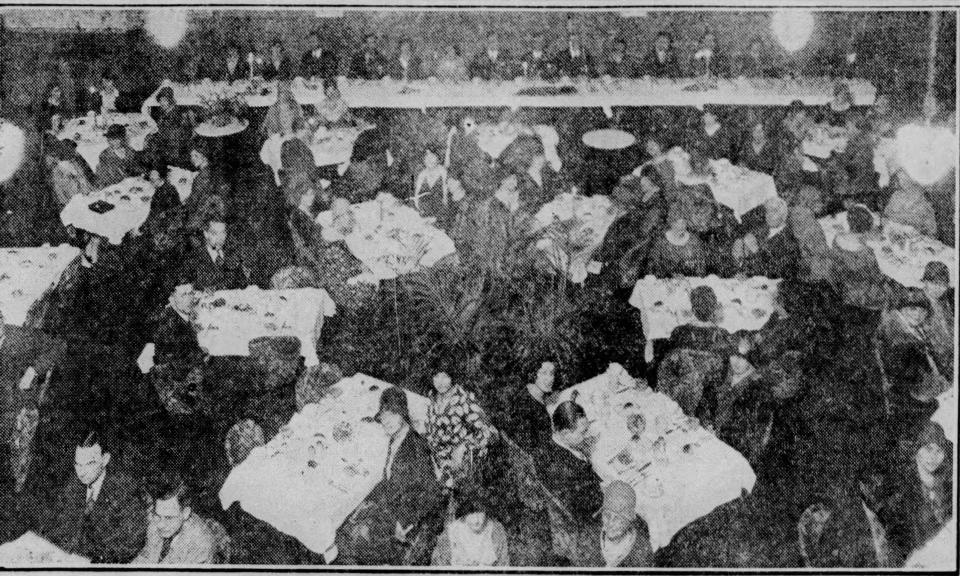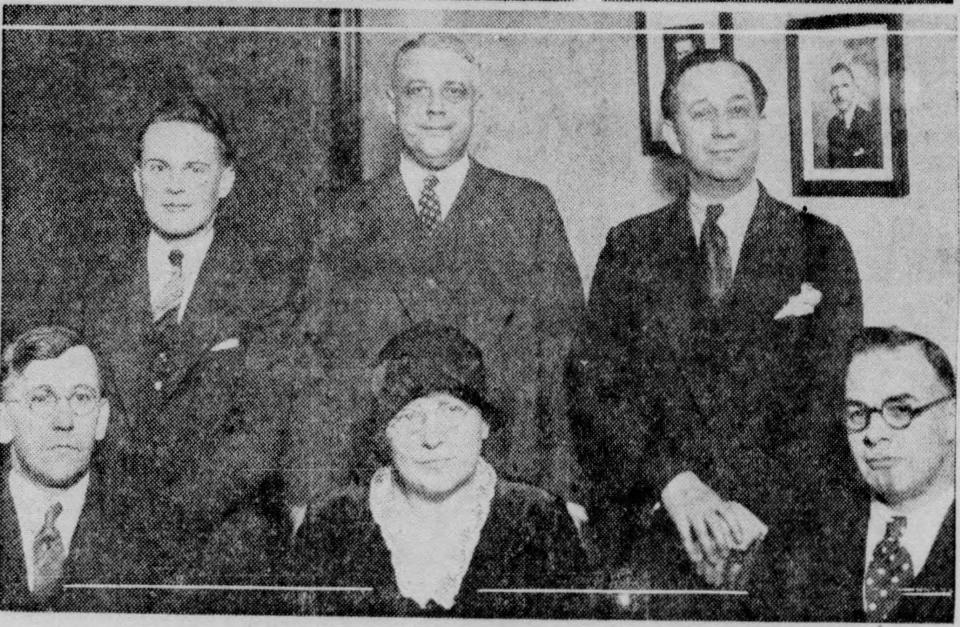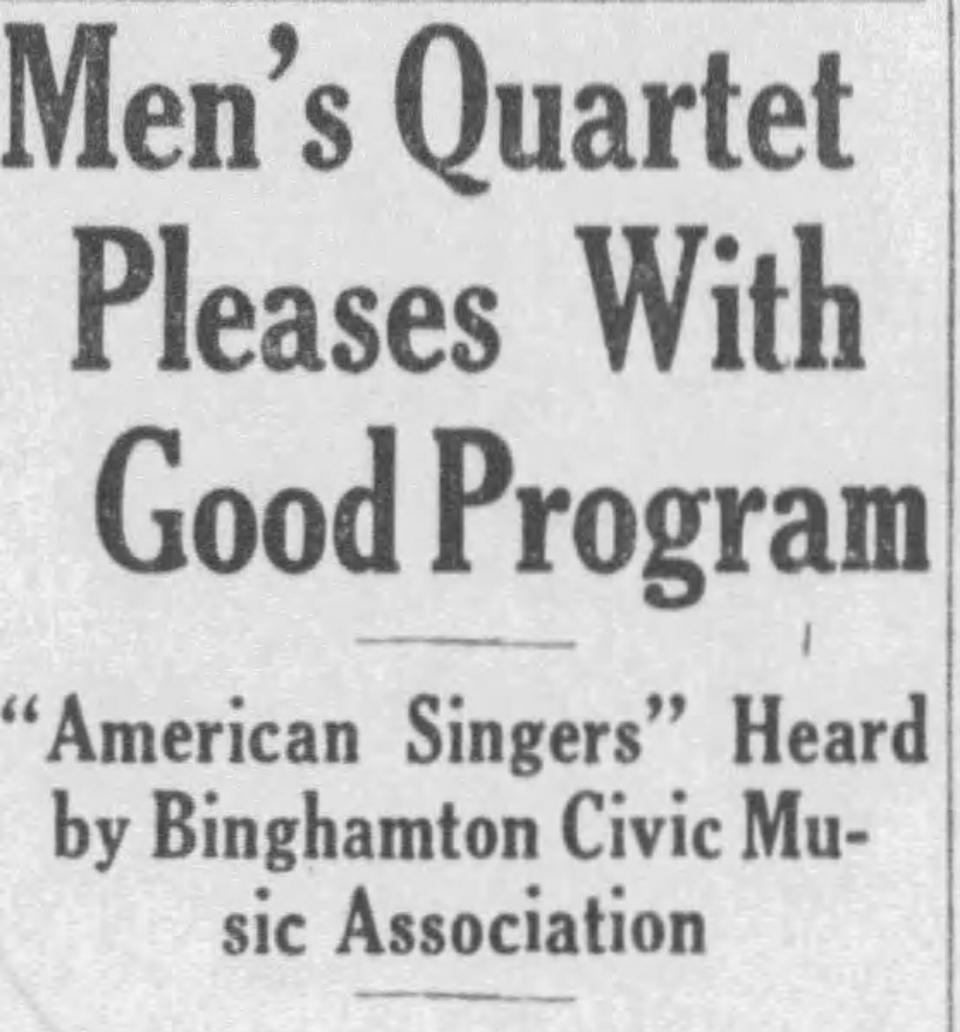How Binghamton struck up the band, created foundation for the arts during Great Depression
There is, I believe, a common misconception about the Great Depression. Yes, the economy of the country imploded with the stock market crash in October 1929. The resulting collapse plunged the nation into the depths of a downturn it had never seen. Unemployment was rampant across the United States in the major cities. Job loss caused a loss of money for nearly all residents. There were runs on banks and shortages of materials everywhere.
Yet, through the next decade, life did go on. Part of the misconception comes from the stories about that time that do reflect some aspects of life then. John Steinbeck’s "Grapes of Wrath" portrayed a bleak picture of life, yet with a glimmer of hope at the end. The television show the "Waltons" spent years portraying a family fighting to survive in the dark days of the depression, yet still able to maintain their values and family.

This was also true in this area. While the residents of the region had to deal with the problems of the Great Depression, there were efforts to sustain life and help it grow. One such effort began in February 1930. On Monday, Feb. 17, a dinner was held at the Binghamton YMCA with 100 local leaders in attendance. It was to announce the creation of the Binghamton Civic Music Association.
Through the auspices of the Chamber of Commerce, the attendees listened to W.S. Wright of the Civic Concert Services. It was an effort that started eight years before to organize groups of interested people in cities across the nation to promote “good” music through membership in these organizations. The dues of the members would provide the funds to provide three concerts for each series during a calendar year.

The initial goal was to promote a campaign to enroll 1,000 members in a short amount of time. Those members’ dues would provide the funding to bring in quality musical artists and orchestras to play for the people of the Broome County region. Remarkably, despite the area being in the early days of the Great Depression, the community leaders on that fateful day set their goal for those 1,000 new members for this organization – and they achieved that goal.
For the first two years of the organization, those members paid their dues and the money raised was used to bring in a variety of musical artists to perform. The concerts were given in variety of locations, including the Kalurah Temple in Binghamton, and the Capitol Theater on Exchange Street. The president was Chester B. Lord, and Cecil Maston became chairman.

By the second year, the membership had dropped to 750, and the next year it stood at only 300. So a moratorium was declared and the concert series was canceled. Once again, another Herculean effort was put into place to raise the number of dues-paying members of the Binghamton Civic Music Association. The association got enough members to live another day and continue its mission to bring quality musical experiences to an area fighting the effects of the Great Depression.
The concerts and that organization continued through the 1930s, and into the war years of the 1940s. By the 1950s, the membership of the association had risen to 1,200 members, and most of the concerts would be held in the Capitol Theater as it had enough seating for well over 1,000 attendees.
But there were changes during the 1960s. The Capitol Theater was demolished to make way for parking for the Binghamton Savings Bank. The concerts were moved to West Junior High School, but the number of concerts and the membership began to dwindle. By 1970, the concerts ended and the association continued for a few years. This writer could find one last reference to the group. It had changed its name twice in three years in an effort to continue.
Politics: House Speaker Mike Johnson touts support for law enforcement in Broome County visit
Help for veterans: Resource Center, Tiny Homes project breaks ground in Binghamton. What to know
In that year, the group gave a sum of money for the creation of what is now known as the Forum. Through four decades, the group had brought classical and popular music in many forms to the region, and in its end, it helped create a center for the performing arts.
Gerald Smith is executive director of the Tioga County Historical Society and a former Broome County historian. Email him at historysmiths@stny.rr.com.
This article originally appeared on Binghamton Press & Sun-Bulletin: Spanning Time in Broome County: Binghamton Civic Music Association

